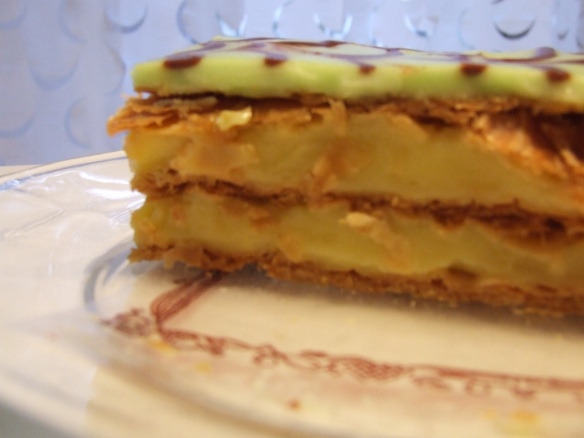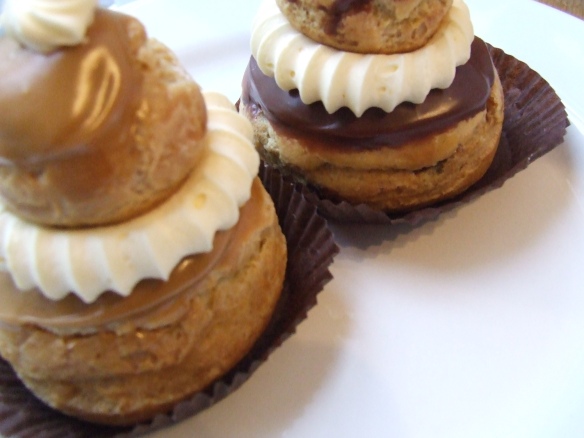
Here’s a photo of a millefeuille. Millefeuille means a thousand leaves, as in the multiple layers of delicate puff pastry interspersed with layers of pastry cream, which is really a delicious custard. The top layer is always glazed with icing in alternating colours. Despite the green-coloured icing, this one is not pistachio-flavoured. I’m beginning to wonder if pistachio millefeuille ever existed in the bakery at the end of my street. Every time I go in and ask for one, the woman says there are none left. Was it a flaky figment of my imagination?

Drinking chilled crémant is an alternative to drinking tea with French pastry. From only 5 to 7 euros a bottle, as opposed to 33 euros for a good bottle of champagne, I pick up a bottle of crémant at the supermarket like I pick up a bottle of wine. It makes a delicious apéritif with a splash of crème de cassis (blackcurrant liqueur) thrown in. For purists, however, it’s nice on its own.

The best example of sparkling wine is champagne from the Champagne wine region of France but, as you know, under AOC regulations (Appellation d’origine contrôlée), all sparkling wines using the champagne method but produced outside of the Champagne region, are forbidden to use the appellation “champagne.” Yes, the French are highly protective of their regions.

Sparkling wines called crémant are so named because their lower carbon dioxide levels give them a creamy rather than fizzy mouth-feel. In France, there are seven appellations for crémant (an appellation is a protected geographical region):
- Crémant d’Alsace
- Crémant de Bordeaux
- Crémant de Bourgogne
- Crémant de Die
- Crémant du Jura
- Crémant de Limoux
- Crémant de Loire





